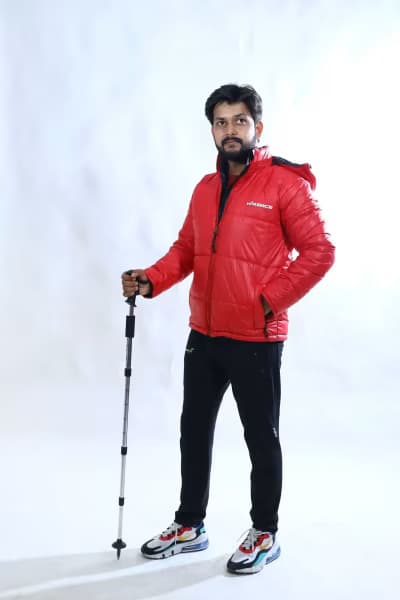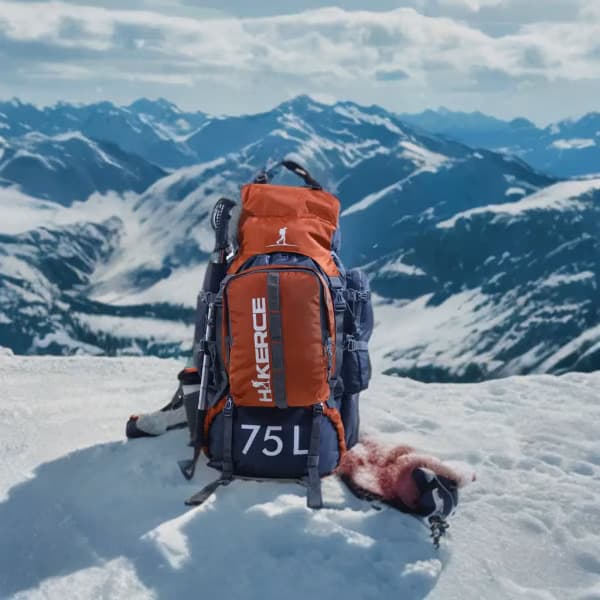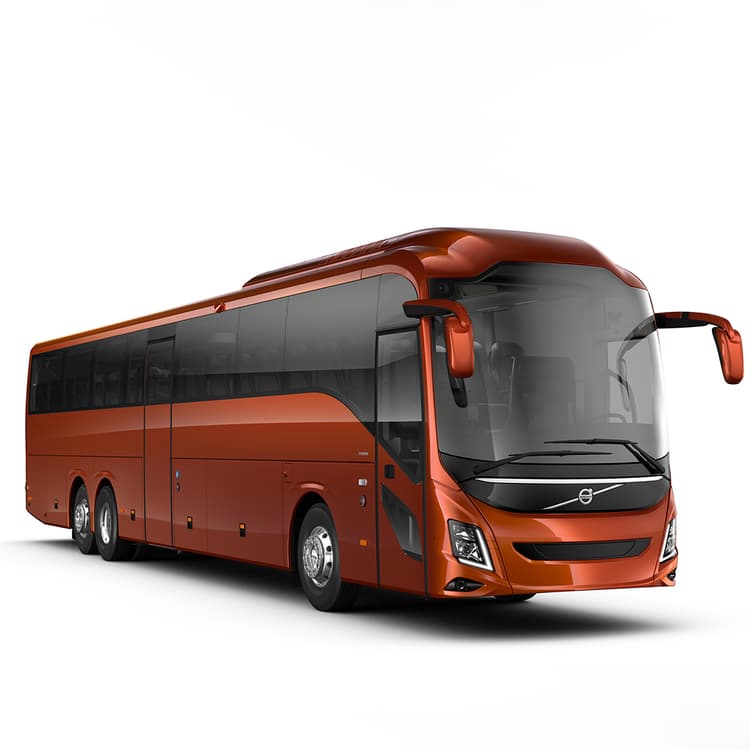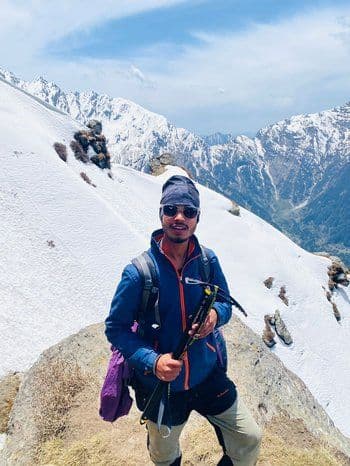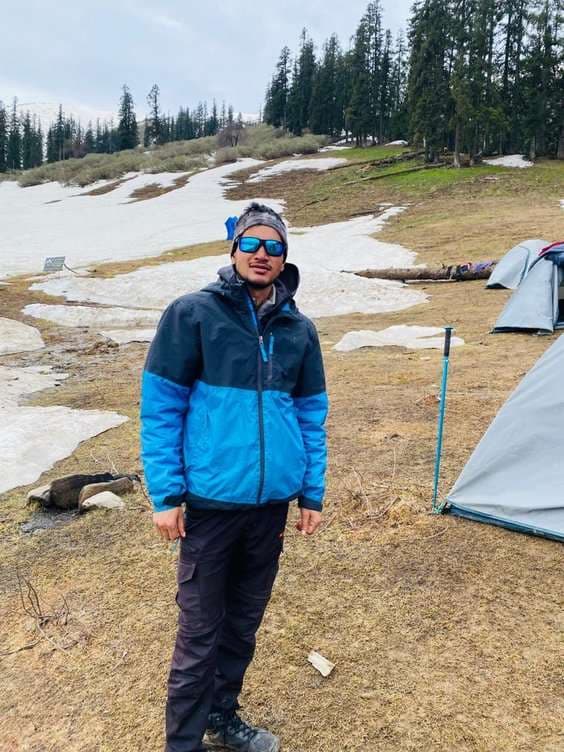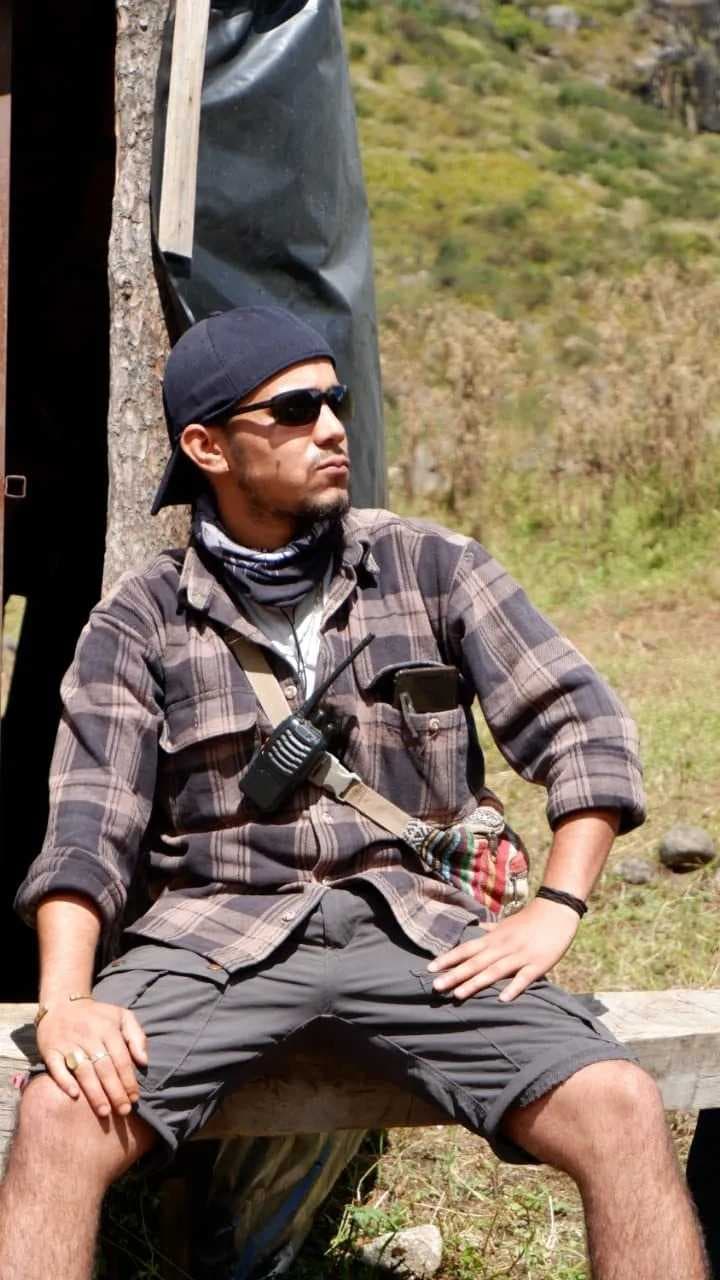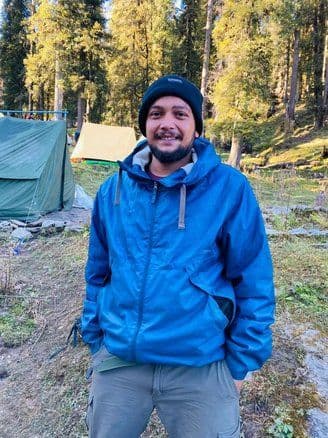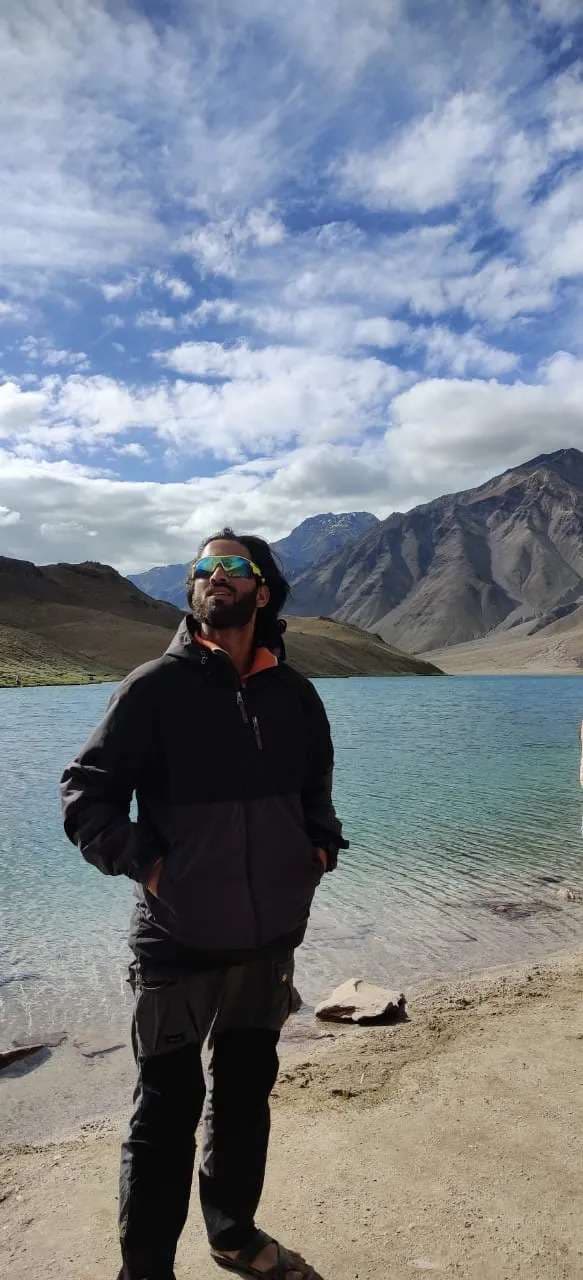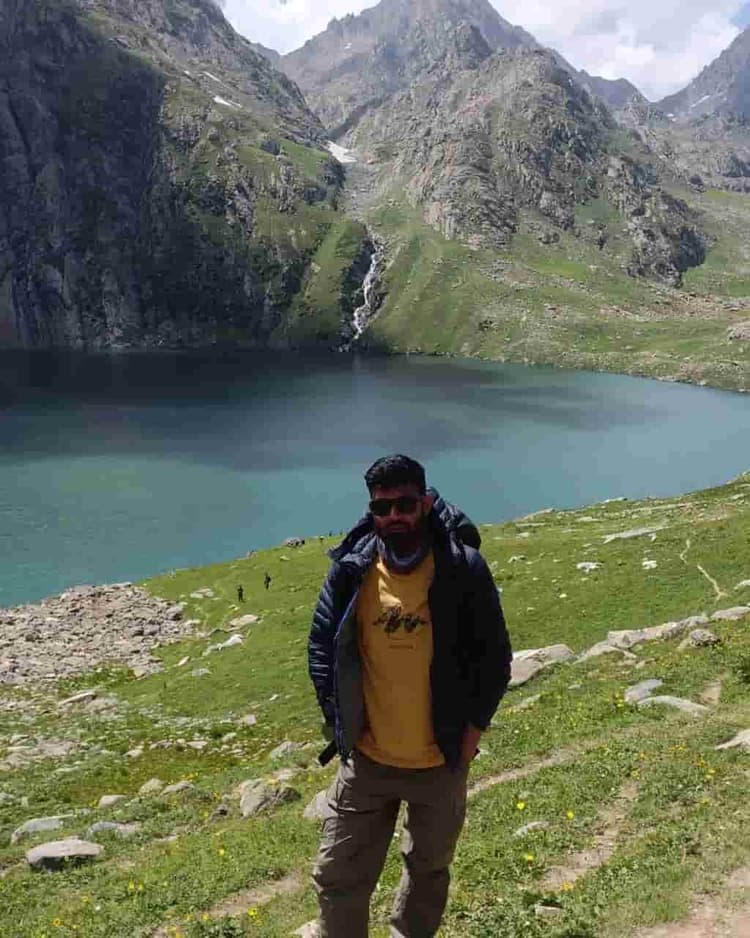Lady of Keylong Expedition
After summiting Friendship Peak or Yinam Peak, you should consider challenging yourself with the next level climb of Lady of Keylong. The impressive summit attracts an increasing number of climbing fans as they appreciate its visual appeal and distinctive climbing difficulties which are gaining popularity on social media. Skilled trekking enthusiasts eagerly pursue the difficult climb because of its harsh climate patterns.
Its poetic name emerged from the way it presents itself. Seeing Lady of Keylong from afar shows the profile of a woman who carries the ritual kilta basket on her back and holds her draati sickle in her hand. The distinctive profile stays visible across all seasons either under the cover of snow or shining brightly with sunlight.
Tinno's informative town stands beneath the mystical peak which locals deeply treasure. Being situated in Keylong's shadow the peak has become an iconic emblem which receives both admiration from adventure seekers and beloved veneration from the local villagers.
Best TimExpeditione for the Lady of Keylong
Timing is everything. The Lady of Keylong Expedition is best done in specific seasons to get the best of weather, visibility and safety. Here’s a breakdown of the seasons:
May to June (Pre-Monsoon):
This is the best time to do the expedition as the snow starts melting and the greenery and landscapes are at their best. Weather is stable with day temperatures between 10°C to 20°C.
Nights can still be cold with temperatures dropping to 0°C or below.
Clear skies and 360° views of the surrounding peaks.
September to October (Post-Monsoon):
After the monsoon rains the air is crisp and the skies are super clear, another great window to do the expedition.
Day temperatures are similar to pre-monsoon season but nights can be colder with temperatures sometimes dropping below freezing.
Good time for photography and to see the Lady of Keylong’s profile.
Monsoon (July to August):
Monsoon is not recommended for the expedition as it’s heavy rainfall, landslides, slippery trails and poor visibility.
The surrounding areas often have roadblocks due to landslides making travel unsafe and unreliable.
Winter (November to April):
Lady of Keylong is snowed in during these months and it’s a very challenging environment.
Only experienced climbers with winter gear and training should attempt the expedition during this time as it’s extreme cold, avalanches and treacherous terrain.
How to Reach the Lady of Keylong
The Lady of Keylong Expedition starts in the beautiful Keylong valley in Lahaul region of Himachal Pradesh. Keylong’s isolation is part of its charm but also requires careful planning to reach. Here’s a step by step guide:
By Air:
Nearest Airport: Bhuntar Airport, 190 km from Keylong is the nearest airport. But connectivity to Bhuntar is limited and travelers often have to take connecting flights from major cities like Delhi or Chandigarh.
From Bhuntar you can hire a taxi or take a bus to Keylong which takes around 6-8 hours depending on road conditions.
By Train:
Nearest Railway Station: Chandigarh Railway Station is the nearest option to reach Keylong. From Chandigarh you need to cover around 350 km by road.
You can hire a private vehicle or use public transport to reach Keylong via Manali.
By Road:
From Manali: The most popular route to Keylong is via Manali-Leh Highway. This route takes you through the famous Atal Tunnel which bypasses the treacherous Rohtang Pass and reduces travel time.
Distance: 120 km.
Time: 4-5 hours.
From Leh: If you are in Ladakh, you can reach Keylong via Leh-Manali Highway.
Distance: 360 km.
Time: 10-12 hours.
From Shimla: You can also reach Keylong via Shimla, through Reckong Peo and Kaza.
Distance: 450 km.
Time: 14-16 hours.
Difficulty Level of the Lady of Keylong Expedition
The Lady of Keylong Expedition is tough due to its high altitude, unpredictable weather and challenging terrain. Here are the reasons why:
1. Altitude:
The peak is over 6,000 meters (19,685 feet) high.
High altitude increases the risk of Acute Mountain Sickness (AMS) which can cause headaches, nausea and dizziness.
Proper acclimatization is a must to avoid AMS.
2. Terrain:
Steep climbs, rocky trails and glacier sections.
Summit climb is technical and physically demanding.
3. Weather:
High altitude weather is unpredictable, temperature and wind can change suddenly.
Nights are very cold, temperature can drop below freezing.
4. Duration:
7-10 days depending on the route and acclimatization schedule.
Long duration and physical climb makes it tough.
Preparation for the Lady of Keylong Expedition
Preparation is key to a safe and successful trip. Here’s the list:
1. Physical Fitness:
Cardio: Run, cycle, swim to build endurance.
Strength: Focus on leg, core and upper body exercises like squats, lunges and planks.
Endurance: Go for long hikes with a loaded backpack to simulate trekking conditions.
2. Acclimatization:
Spend at least 2-3 days in Keylong or nearby high altitude place before starting the trek to acclimatize your body.
Ascend gradually to avoid AMS.
3. Gear and Equipment:
Clothing: Layered clothing, thermal wear, fleece jackets, waterproof outer layers, insulated gloves.
Footwear: Good quality trekking boots with ankle support and crampons for icy terrain.
Backpack: A sturdy backpack with enough space to carry essentials.
Sleeping Bag: Sleeping bag rated for sub-zero temperatures.
Other Gear: Trekking poles, headlamps, sunglasses, water bottle or hydration pack.
4. Nutrition:
Carry high energy snacks like nuts, protein bars, dried fruits.
Drink plenty of water and avoid alcohol and caffeine.
Eat well to keep your energy levels up.
5. Mental Preparation:
Be positive and prepared for the challenges.
Meditate or visualize to focus and be resilient.
Safety Factors for the Lady of Keylong Expedition
Safety first on any high altitude expedition. Here are the essentials:
1. Altitude Sickness:
Recognise Symptoms: Look out for AMS symptoms – headaches, nausea, fatigue, short of breath.
Preventative Measures: Acclimatise properly, ascend gradually, stay hydrated.
Emergency Response: Descend if symptoms get worse and seek medical attention.
2. Weather:
Check the forecast before you start.
Bring gear for rain, snow and extreme cold.
Be prepared to stop or abandon the trek if conditions become unsafe.
3. Guided Expeditions:
Hire experienced guides or join a trekking group for better navigation and safety.
Guides will know the terrain and local conditions.
4. First Aid Kit:
Bring basic supplies – bandages, antiseptics, pain relievers, altitude sickness medication.
Learn basic first aid to handle emergencies.
5. Communication:
Bring a satellite phone or walkie-talkie as mobile networks may not be available in remote areas.
Tell someone your itinerary and expected return date.
6. Wildlife and Natural Hazards:
Stick to the trails to avoid wildlife or hazardous terrain.
Watch out for loose rocks, slippery paths and crevasses.


